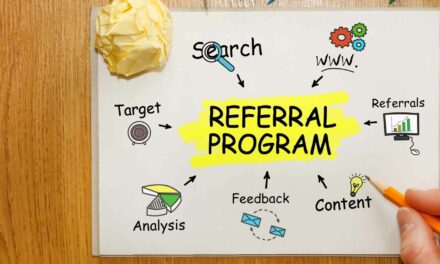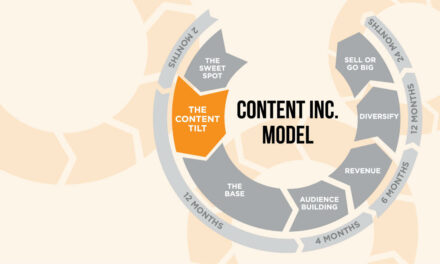Word-of-mouth has long been the best way to advertise a product, but how long does that buzz last — especially in the digital age? A new study says that customers-turned-volunteer “brand advocates” are still much more likely to buy and recommend products than they were before they got involved in the marketing campaign a year before.
The study “Advocacy Over the Long Term: Brand Advocates Give Brands Long-Term Benefits,” from the social media marketing agency BzzAgent, Inc., shows that when a campaign wins over a volunteer advocate, the good will can last for a while. For example, 91% of those who said right after the campaign that they were likely to recommend the product remained likely to recommend it a year later. Of those brand advocates who said immediately after the campaign that they planned to buy the product, 88% were still giving the product a spot on their shopping lists after a year.
The Boston-based BzzAgent is the social marketing division of dunnhumby, a customer data mining company that itself is a subsidiary of British supermarket giant Tesco, PLC. BzzAgent’s brand advocates are people who give the company information about themselves and are matched up with free samples of products and services based on that information. BzzAgent then encourages the brand advocates to share their honest opinions about the products with friends and family in person and through online social media, such as Facebook, blogs, and videos. The advocates are also supposed to disclose in these conversations that they got the products for free through BzzAgent.
If the conversations happen offline, the advocates write brief reports for BzzAgent. They don’t need to do that after online conversations, though, because the company can gather that information directly using means such as Twitter hashtags, explains Brian Cavoli, BzzAgent’s director of marketing.
The more conversations the users start about the products they receive, the more free samples brand advocates can look forward to. Meanwhile, the companies that use BzzAgent’s 750,000 brand advocates get feedback on their products, information on potential customers, and a marketing campaign that reaches the brand advocates and everyone they talk to.
“I think this is a continuation of old-school word-of-mouth marketing,” says Malcolm Faulds, BzzAgent SVP of marketing.
The big difference between offline word-of-mouth marketing and conversations that happen in the digital world is that companies can observe online buzz much more directly and mine information from it much more efficiently. This ability to track and measure social media campaigns is what’s new, Faulds says.
BzzAgent conducted the study because it knew about the short-term effects of its campaigns but didn’t have any data on the long-term effects of brand advocacy, Cavoli says. The study looked at eight BzzAgent campaigns for consumer packaged goods, measuring the advocates’ opinions every 3 months for a year after the campaigns ended. The findings suggest that positive opinions of a product, likelihood of recommending it, and intention to purchase all increase for brand advocates during the campaign and stay near those new levels for at least a year.
So how do these campaigns cause such lasting effects? It’s about “social capital” and setting up good, memorable experiences for customers, Faulds says. People want to brag, to share information with their peers about new things they haven’t heard about yet, he says. That feeling is part of what makes talking about products and services rewarding for brand advocates. And “if you can carve out a really deep engaging experience for customers” — such as creating a unique online event for them to be part of — “they will remember it for a really long time,” Faulds explains.
After this longevity study, Faulds expects more accurate marketing models to be developed with longer time periods in mind, rather than being focused on the short-term spikes that campaigns can cause.
Social media campaigns can make it easier for companies to get information about customers and connect with them, but they are not as simple to carry out as they may seem, says social media consultant Jay Baer.
Baer’s company, Convince & Convert, LLC, has worked with clients such as Sony, Metropolitan Life Insurance Co., Allstate Insurance Co., and the California Travel & Tourism Commission to create social media programs. He says companies have to understand that they’re not going to create loyal fans “out of thin air” with social media the way they might be able to with long-established forms of push advertising, such as television, radio, and print. That’s because online social media marketing can only work by pulling customers to opt in, which attracts mainly people who are already interested in the product, Baer explains. Social media campaigns are usually better for retaining customers rather than gaining new ones, he says.
The other thing that companies must realize in order to run effective social media programs is that “the point of social media is to activate fans, not to collect them like baseball cards,” Baer says. A company’s number of Facebook fans or Twitter followers is not as important as how well the company motivates those fans and followers to remain good customers. Companies that understand this give their fans a series of motivating “assignments,” such as uploading a photo or sharing information with friends, Baer says. In this way, they create the conditions for those memorable experiences that Faulds described earlier.
The nature of the product or service also has something to do with how excited people can get about it, Baer says. Companies that are in the business of, for example, travel or fashion, “things that make more of a statement about who you are as a person,” can find it easier to connect with their customers through social media marketing than companies that sell more functional products and services, Baer says.
Baer also encourages companies to thoughtfully choose which social media platforms to use, because each one has different strengths. “There are so many different places to interact with customers and potential customers now,” he says. “I get fearful that companies are putting too many eggs in the default Facebook basket.” Baer points to Whole Foods Market IP, L.P.’s use of the Pinterest site as an example of an effective matching of content — in this case, mostly photos of food — and medium. He adds that companies should decide where to start by asking customers what sites they prefer if long-term success is to be had.
Image courtesy of pandapaw, Shutterstock Images.






